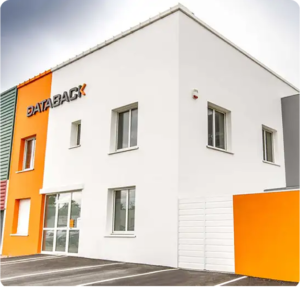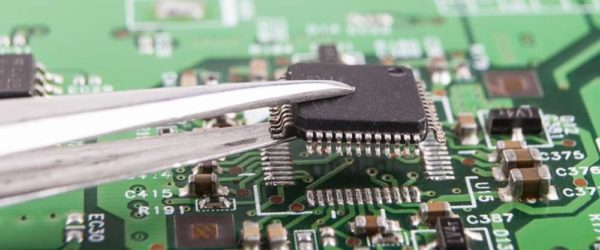Replacing your hard disk’s PCB: a bad idea?
Electronic failures lead to damage to the hard disk’s printed circuit board (PCB) and loss of access to your data. Replacing the PCB is therefore the first thing to do. Databack warns you of the risks to your hard disk and your data.
Electronic failures: a double whammy for your hard drive
Electronic failures on computer storage media are often the result of an electrical surge (lightning strike, power network variations…) or a short-circuit in the power supply (water damage, mishandling…). Damage to the electronic components of the storage medium (hard disk PCBs in particular), as well as loss of access to data, means a double penalty for the user.
The logical reflex is to repair or replace the damaged electronic components in order to restore access to the data on the medium. Every good computer repairman has successfully replaced the PCB of a hard disk and managed to restart it…
We would, however, like to warn you of the risks inherent in these mechanical manipulations following an electronic failure. If the decision to carry out hardware troubleshooting takes precedence over entrusting data recovery to a dedicated laboratory, this choice must be made with full knowledge of the facts…
Changing your electronic board: risks and damage
Simply replacing the PCB of your hard disk drive can cause irreversible damage. HDD technologies applied to electronic components have undergone significant evolution, even fundamental change, in recent years.
To save money, hard disk drive manufacturers have transferred part of their microcode (or firmware) directly onto the platters. The cost of storage is much lower than that of an electronic component, but this configuration no longer allows the electronic board to boot the hard disk on its own. This effectively eliminates the possibility of swapping cards between recent hard disks. And in some cases, essential values stored in the card’s ROM can be irretrievably altered.
Hardware interventions on hybrid hard disks ( SSHD type) are even riskier: a NAND Flash memory stores part of the user’s data on the electronic board.
Another case, another risk, with hard disks featuring load/unload head technology: in the event of an electronic failure, the read/write heads may remain blocked or come into contact with the platter surface during a landing. Rotating the motor to replace the electronic board will deform the read/write heads, damaging the platter surfaces and destroying data.
Intervene or not on your hard disk depending on its brand and date of manufacture
However, the design of some hard drives allows for hardware intervention and replacement of the electronic board. This applies in particular to HDDs produced by Western Digital, Seagate, IBM, Samsung, Maxtor and Fujitsu, and manufactured before 2010. Even in the event of incompatibility, changing or swapping the electronic card will not result in any modification or alteration of your media or data.
A little tip: make sure you label and label your circuit boards before handling them!
However, we do not recommend any hardware work (replacement, repair, etc.) on PCBs for recently manufactured hard drives (after 2010), or on Toshiba and Hitachi hard drives (any year of manufacture).
19 April 2019









